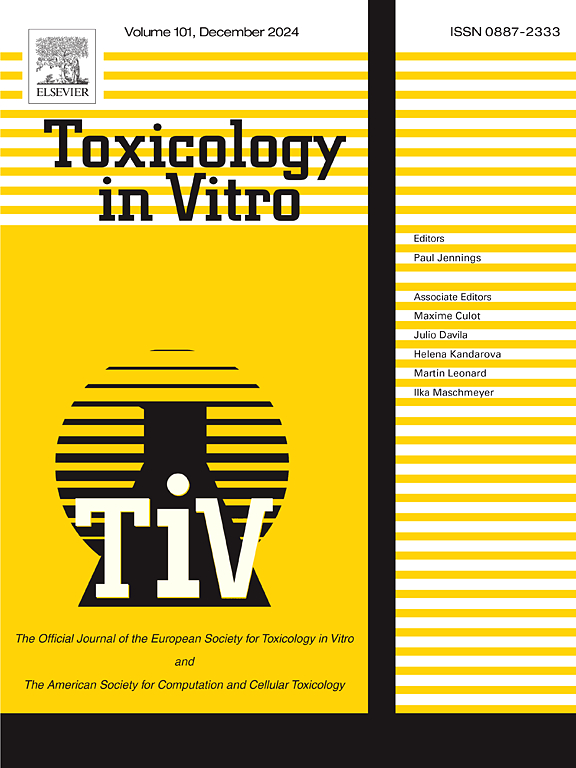Association between drug-induced heart failure and CYP1A1, CYP1B1, and CYP3A4 inhibition: Utility of cytochrome P450 inhibition assay for evaluating cardiotoxicity of drug candidates
IF 2.6
3区 医学
Q3 TOXICOLOGY
引用次数: 0
Abstract
Unpredictable adverse drug reactions (ADRs) present a significant challenge in drug development and require advanced prediction systems for ADRs. Previously, we identified a connection between drug-induced liver injury (DILI) and the inhibition of CYP1A1 or CYP1B1, reporting the usefulness of this inhibition data from these cytochrome P450s (P450s) for predicting DILI. This study aimed to investigate the utility of P450 inhibition data in predicting drug-induced organ toxicities beyond DILI. We selected 364 drugs with ADR information as test drugs from the public database SIDER (Side Effect Resource). Our focus was on 10 groups of ADRs affecting the liver, kidney, heart, blood/hematopoietic system, intestines, muscle, and lungs, as classified by MedDRA. The inhibitory activities of 10 human P450s were evaluated in vitro using recombinant enzymes and luminescent substrates. Our analyses revealed notable associations between heart failure and the inhibition of CYP1A1, CYP1B1, and CYP3A4. Heart failure-positive drugs tended to exhibit strong inhibition of these P450s compared to heart failure-negative drugs. Furthermore, most drugs that inhibited two or three of the three P450 forms were found to be heart failure-positive. These results suggest that the inhibition assay data for CYP1A1, CYP1B1, and CYP3A4 help assess drug-induced cardiotoxicity during drug development.
药物性心力衰竭与CYP1A1、CYP1B1和CYP3A4抑制之间的关系:细胞色素P450抑制试验用于评估候选药物的心脏毒性
无法预测的药物不良反应(ADR)是药物开发过程中的一大挑战,因此需要先进的药物不良反应预测系统。在此之前,我们发现了药物性肝损伤(DILI)与 CYP1A1 或 CYP1B1 抑制之间的联系,并报告了这些细胞色素 P450(P450)的抑制数据对预测 DILI 的作用。本研究旨在探讨 P450 抑制数据在预测 DILI 之外的药物诱发器官毒性方面的实用性。我们从公共数据库 SIDER(副作用资源)中选择了 364 种有 ADR 信息的药物作为测试药物。我们的研究重点是 MedDRA 分类的 10 组影响肝脏、肾脏、心脏、血液/造血系统、肠道、肌肉和肺部的 ADR。我们使用重组酶和发光底物对 10 种人类 P450 的抑制活性进行了体外评估。我们的分析表明,心力衰竭与 CYP1A1、CYP1B1 和 CYP3A4 的抑制作用有明显的关联。与心衰阴性药物相比,心衰阳性药物往往对这些 P450s 有很强的抑制作用。此外,大多数抑制三种 P450 中的两种或三种形式的药物都是心衰阳性药物。这些结果表明,CYP1A1、CYP1B1 和 CYP3A4 的抑制检测数据有助于在药物开发过程中评估药物诱发的心脏毒性。
本文章由计算机程序翻译,如有差异,请以英文原文为准。
求助全文
约1分钟内获得全文
求助全文
来源期刊

Toxicology in Vitro
医学-毒理学
CiteScore
6.50
自引率
3.10%
发文量
181
审稿时长
65 days
期刊介绍:
Toxicology in Vitro publishes original research papers and reviews on the application and use of in vitro systems for assessing or predicting the toxic effects of chemicals and elucidating their mechanisms of action. These in vitro techniques include utilizing cell or tissue cultures, isolated cells, tissue slices, subcellular fractions, transgenic cell cultures, and cells from transgenic organisms, as well as in silico modelling. The Journal will focus on investigations that involve the development and validation of new in vitro methods, e.g. for prediction of toxic effects based on traditional and in silico modelling; on the use of methods in high-throughput toxicology and pharmacology; elucidation of mechanisms of toxic action; the application of genomics, transcriptomics and proteomics in toxicology, as well as on comparative studies that characterise the relationship between in vitro and in vivo findings. The Journal strongly encourages the submission of manuscripts that focus on the development of in vitro methods, their practical applications and regulatory use (e.g. in the areas of food components cosmetics, pharmaceuticals, pesticides, and industrial chemicals). Toxicology in Vitro discourages papers that record reporting on toxicological effects from materials, such as plant extracts or herbal medicines, that have not been chemically characterized.
 求助内容:
求助内容: 应助结果提醒方式:
应助结果提醒方式:


